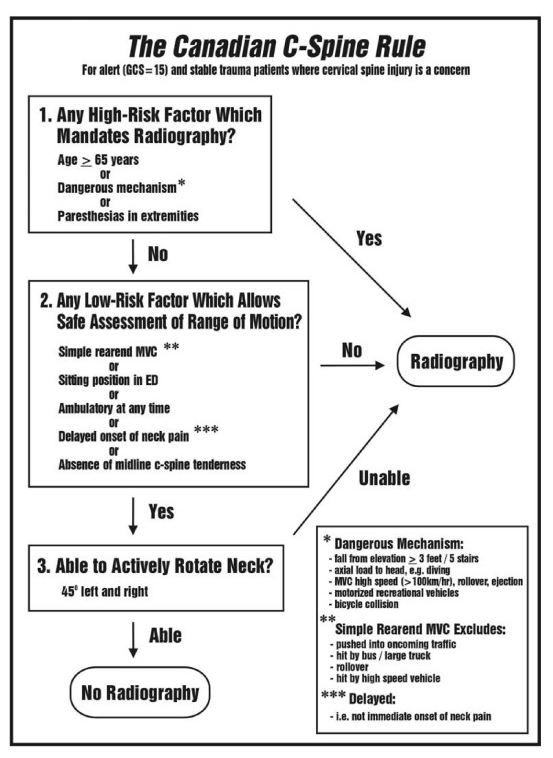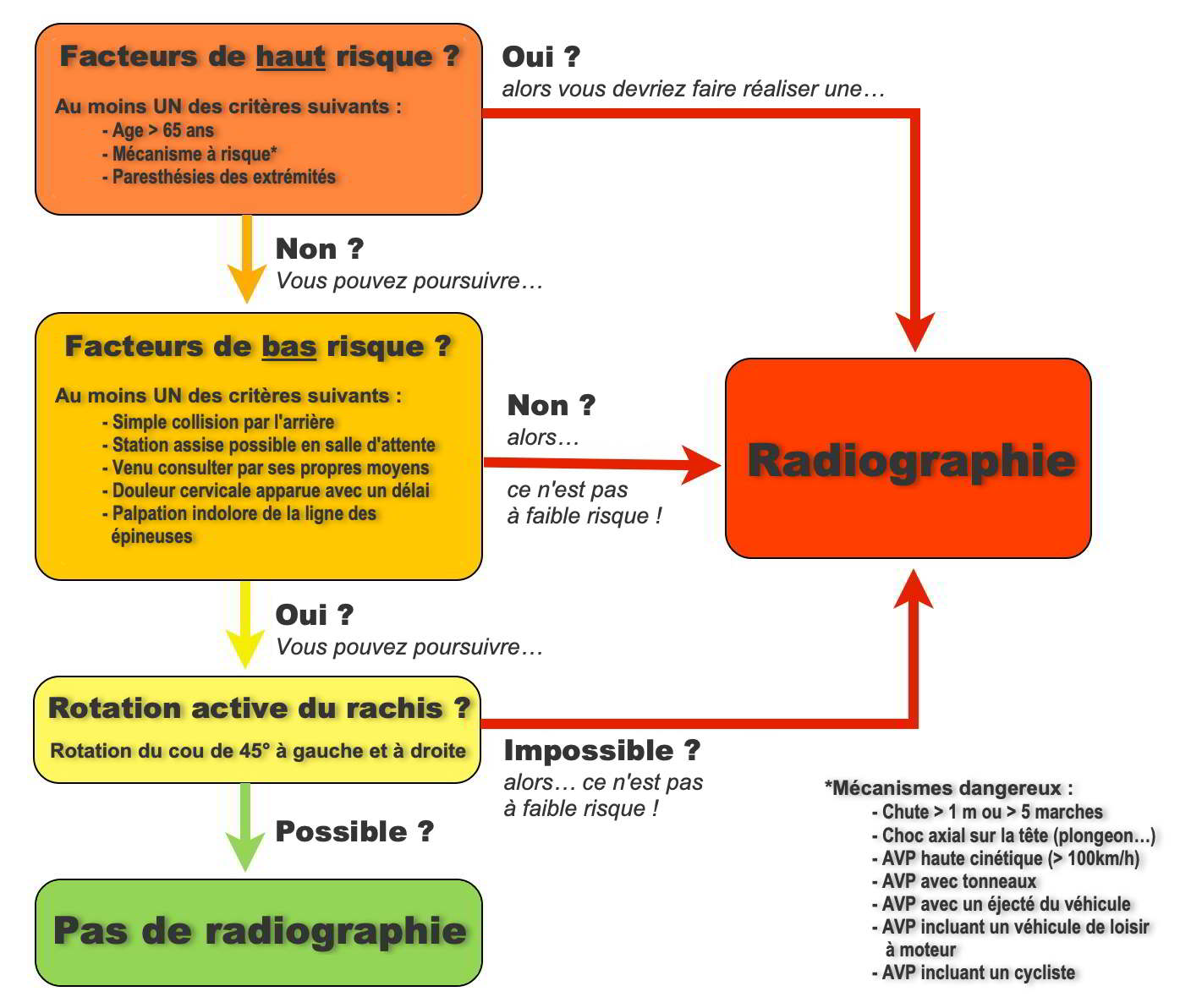
Had the CCR been in use during the study period, a 17.4% reduction in radiography could have been achieved without compromising patient care. The CCR can be applied successfully in the UK. Interobserver reliability was good (κ=0.75 95% CI 0.44 to 1.06). Doctors were comfortable using the rule in 91% of cases. If the decision for radiography had been made according to the outcome of the CCR, only 815 (57.4%) would have had c-spine radiography and all 8 abnormal cases would have undergone imaging. Background Clinical decision rules (CDRs) are commonly used to guide imaging decisions in cervical spine injury (CSI) assessment despite limited evidence for their use in paediatric populations. 987 (69.5%) had c-spine radiography performed, with 8 (0.6%) having a c-spine injury. A subsample of patients was reassessed by a second doctor to test interobserver reliability.Ī total of 1420 patients were enrolled in the study (50.4% male). Doctors were instructed to manage patients according to existing practice and not according to the decision obtained from the rule.
#Canadian c spine rules how to#
How to carry out full in-line spinal immobilisation.
#Canadian c spine rules trial#
Over the 24 month trial period, 148 doctors were provided training in the use of the CCR and instructed to assess eligible patients presenting with potential c-spine injury. Canadian C-spine rule, are pain free and are able to actively rotate their neck 45 degrees left and right they do not have any of the factors listed in recommendation 1.1.7. The study was conducted in two UK emergency departments with a combined annual attendance of >150,000 adult patients. Paramedics will use the Canadian C-Spine Rule to evaluate low-risk trauma patients meeting the study inclusion criteria in order to determine the need for spinal immobilization for transport to the hospital.Ĭanadian C-Spine Rule: Paramedics will apply a validated decision rule (the Canadian C-spine Rule) to determine whether or not immobilization is required for trauma patients being transported to the emergency department.To determine the potential of the Canadian Cervical Spine Rule (CCR) to safely reduce the number of cervical spine (c-spine) radiographs performed in the UK emergency department setting. Patients referred from another hospital and transported between facilities.įractures, Bone Study Results Participant Flow Recruitment Details Spinal stenosis, or previous cervical spine surgery), or Patients with known vertebral disease (ankylosing spondylitis, rheumatoid arthritis, Patients with acute paralysis (paraplegia, quadriplegia), Patients with penetrating trauma from stabbing or gunshot wound, "Acute" refers to injury within the past 4 hours. Respiratory rate between 10 and 24 breaths per minute). "Stable" refers to normal vital signs(systolic blood pressure 90 mm Hg or greater and "Alert" is defined as a Glasgow Coma Scale score of 15 (converses, fully oriented, and Neither neck pain nor visible injury, but significant mechanism of injury asĭetermined by the paramedic at the scene. No neck pain but some visible injury above the clavicles, and/or Implementation of the Canadian C-spine rule reduces cervical spine x-ray rate for alert patients with potential neck injury Debra Kerr, BN, MBL. Neck pain with any mechanism of injury (subjective complaint by the patient ofĪny pain in the posterior aspect of the neck), "Potential c-spine injury after sustaining acute blunt trauma" will include patients

The time of paramedic arrival at the scene based on the following criteria: Patient eligibility will be determined at

Injury after sustaining acute blunt trauma. Total time spent with patient (Defined as difference between Transfer of Care and Arrival at Patient Side)Ĭonsecutive alert, stable adults evaluated by the paramedics with potential c-spine

Time spent at scene (difference between Paramedic scene departure and arrival at patient side) Paramedic agreement and level of comfort with the decision suggested by the Canadian C-Spine Rule Measurements of the performance of the rule will include:


 0 kommentar(er)
0 kommentar(er)
